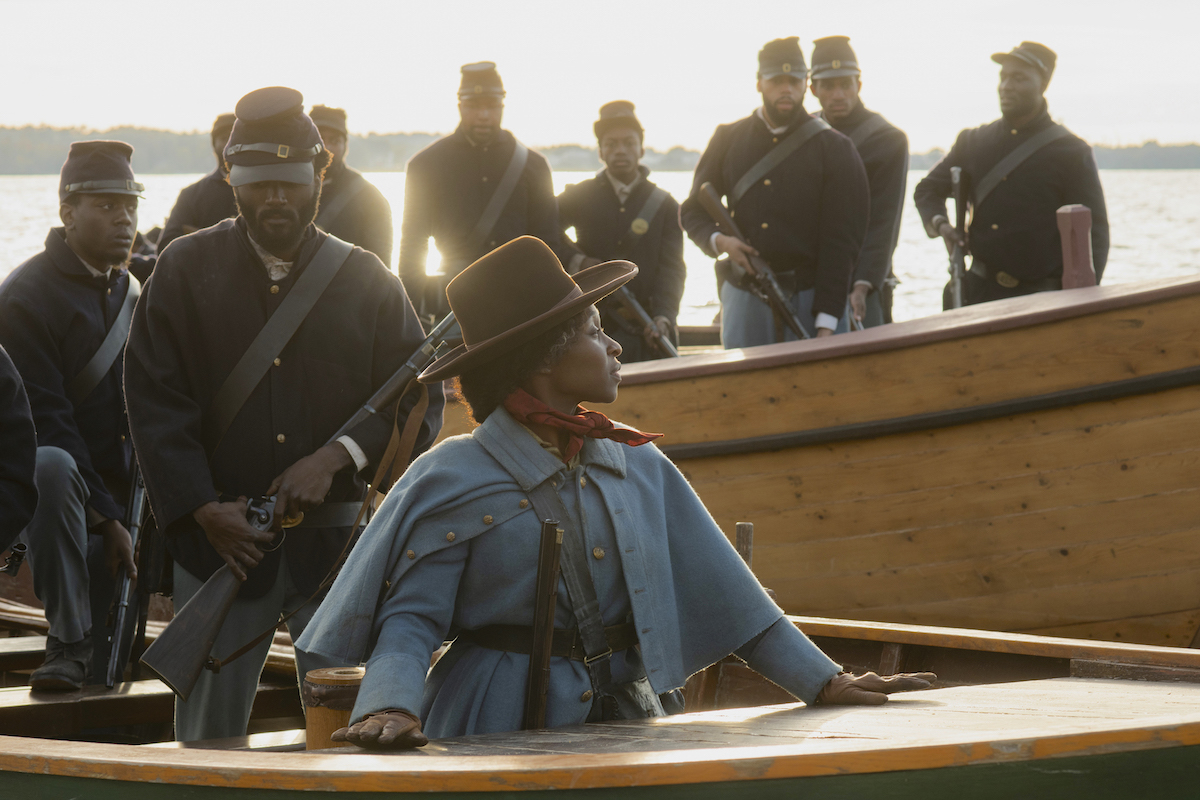Harriet Tubman was the toughest freedom fighter that ever lived. Just ask John Toll, ASC, director Kasi Lemmons, and the dedicated indie team who brought Harriet to the big screen.
By David Geffner / Photos by Glen Wilson, SMPSP / ©2019 Focus Features, LLC
With family members all having worked in elementary, secondary and higher education, and a handful of law-school educated professionals around me growing up, I can confidently say I never slacked off when it came to learning American history. But it took writer/director Kasi Lemmons’ inspiring new indie feature, Harriet (distributed by Focus Features), to fully open my eyes about what a tremendously bad-ass human being Harriet Tubman was. To describe Tubman (played with enormous grace and quiet intensity by Tony-winner Cynthia Ervivo) as the toughest American freedom fighter that ever lived is no understatement.
In fact, I’ll go one better and say please put away those epic Marvel movies for a moment and go see a film about a real-life superhero – a black woman, born into slavery in pre-Civil War era Maryland, who was beaten and whipped throughout childhood, and suffered a traumatic head injury that created hypersomnic black-out spells her whole life. Not only did Tubman escape to Philadelphia (traveling alone at night in areas where wild animals, poisonous snakes, bandits, and other mortal dangers were common), she went back to her former slave quarters – more than a dozen times – to rescue her family and friends, roughly 70 slaves in total, using the “Underground Railroad,” a network of safe houses provided by antislavery activists.
And there’s more.
After the Fugitive Slave Act of 1850 passed (which allowed Southern slave owners to reclaim their so-called “property” in northern states), Tubman guided even more slaves north of the border into Canada and safety. She helped abolitionist John Brown not only recruit men but also plan Brown’s raid on Harper’s Ferry; when the Civil War began, Tubman worked for the Union Army as a cook, nurse, armed scout, and spy. She became the first woman in American history to lead an armed expedition, guiding a raid at Combahee Ferry, in South Carolina, which liberated more than 700 slaves!
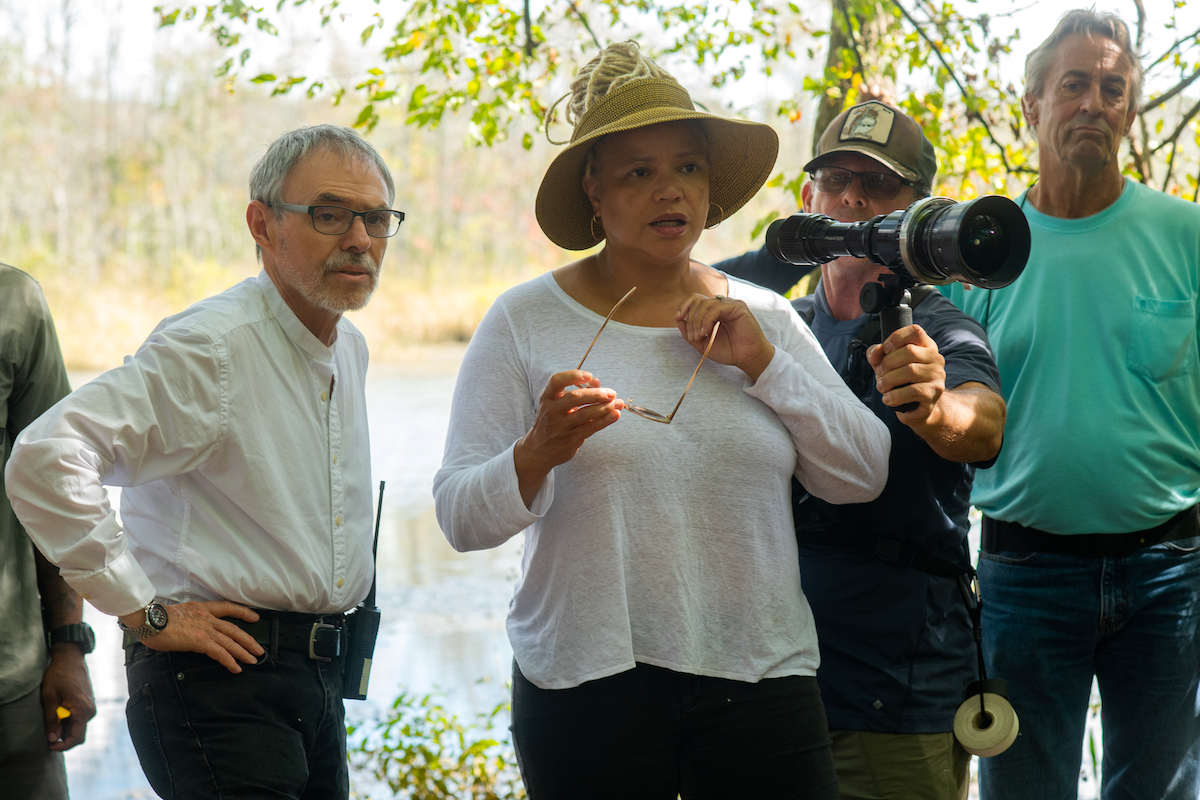
All of which is to say, the team that worked on Harriet, which included Lemmons (who co-wrote the script with Gregory Allen Howard) Production Designer Warren Alan Young, and Director of Photography John Toll, ASC, felt the weight to get Tubman’s story right, despite a challenging indie budget and schedule, and numerous historical locations.
Harriet’s evolution began a few years earlier in the hills of Utah, where Toll and Lemmons were both summer advisers for the Sundance Institute. As Lemmons recalls: “I was trying to get Harriet set up at that time, and Terilyn Shropshire, who has edited a bunch of films for me, said, ‘You’re looking for someone to shoot your movie? Do you know you’re sitting next to John Toll?’ I said: ‘Of course I do. But I’m not going to just approach John Toll about shooting Harriet!’ It took a while, but I finally got up the nerve to ask John what he was working on, and he said he was looking for his next project, which he thought he wanted to be a smaller indie. ‘I said, ‘really? Isn’t that interesting!’”
Lemmons said the atmosphere at the Sundance workshops encourages creative give-and-take among the peer advisors as well as the fellows. “I remember asking John if he had any suggestions for who should shoot Harriet,” she adds, “and he was like: ‘what am I? Chopped liver?’ In fact, John called me fairly soon after reading the script and said he loved my movie. One of my graduate students, who was at my house at the time, took pictures on her smartphone of me taking that call; I think I burst into tears, I was so excited.”
Toll, who had never met Lemmons before the Sundance workshop, credits the one-week immersion for being a “deep dive” into learning each other’s visual aesthetics. “We acquired a sense of each other as filmmakers, by watching, talking, and advising on other people’s films,” he shares. “It was very beneficial, because typically when you go to interview with a new director for a film, it’s to meet for an hour or so in an office. We came to know one another by discussing other people’s work.”
Toll describes Harriet, which was shot on the Sony VENICE, as the perfect narrative vehicle to shoot in wide-screen with spherical lenses. “When shooting wide-screen movies on film, I shot with anamorphic lenses to avoid the Super 35mm optical process,” he explains. “I always loved the idea of using spherical lenses for a wide-screen film, but the idea of creating an optical of the entire film as the very last step in post-production made me very uncomfortable.
“With digital cameras, of course, there was no optical in post,” Toll continue. “So being able to shoot a native 2:39 aspect ratio with spherical lenses was a fantastic opportunity. Especially on a lower budget and short-scheduled film. I’ve also never been a fan of shallow depth of field with anamorphic lenses. It makes me too aware of the camera. Harriet is set in the mid-1800s, which meant no electrical sources of light. The combination of the exposure index of the VENICE [2500] and wide apertures with spherical lenses allowed us to stay with lower light levels and authentic practical sources of light; candles and gas lanterns for interiors; and either open flame torches or no practical sources at all for the night time rural exteriors.”
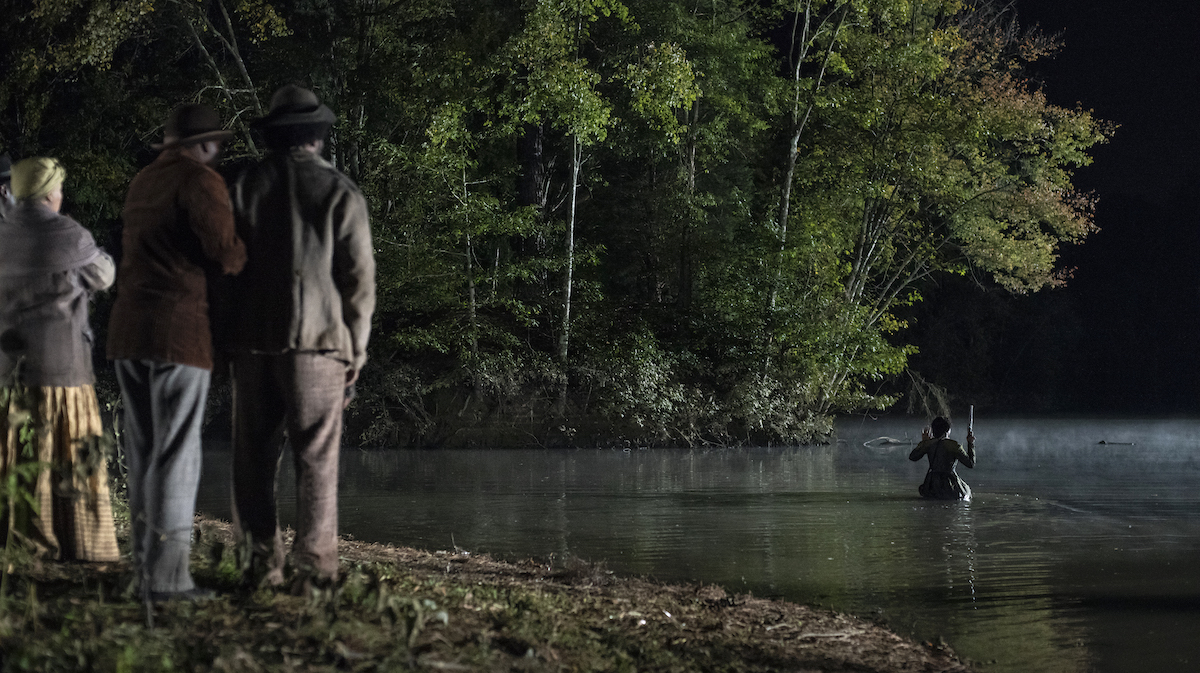
Toll says one of the most challenging scenes was a nighttime exterior where Harriet Tubman is leading a group of slaves to freedom near her former plantation. The group becomes pinned down by slave-owners – led by her nemesis, Gideon Brodess (Joe Alwyn) – by the river, with the only means of escape being a terrifying night water crossing.
“These types of scenes are always challenging,” Toll states. “How do you motivate light at night when there are no practical sources? There really isn’t any light coming from anywhere. It’s dark! All you can do is turn on a light and through positioning, and quality – hard, soft, diffusion, etc. –hope you create something that simulates a natural kind of feel and tell yourself it’s ‘moonlight.'”
Lighting the river crossing (which was shot in a lake) was made more challenging by the need to shoot wide to include the large group of characters, as well as ensure Tubman walks in nearly over her head, creating a treacherous, even life-threatening moment.
“We put the camera on a modular crane and put that in a boat anchored out in the water,” Toll recounts. “It was December in Virginia, with air temperatures in the high 30’s and the water not much warmer, meaning Cynthia could only be immersed for a short period. There was not much opportunity for fine-tuning the shot.”
Adding to that was the rugged terrain near the Virginia lake that dictated how close the large HMI sources (positioned by Gaffer Jarred Waldron and his electric team) could be, typically not much closer than 100 yards. The big lights were part of a “cinematic look,” Lemmons says both she and Toll wanted to create, despite the limited budget.
“We wanted it to feel big, not showy, but epic in every way,” Lemmons describes. “My usual approach is to shot list and stick to a plan until you can’t stick to it anymore. What was terrifying about this movie was that in many cases we could only do two takes. I like a beautifully covered scene, with a lot of options in editing. So to not sacrifice getting coverage, I had to trust the actors to get it right the first or second time, and then just move on. It was 38 degrees during the river crossing; I wasn’t going to push Cynthia under those conditions. So I told everyone – ‘let’s just get one fantastic take!’ And we did.”
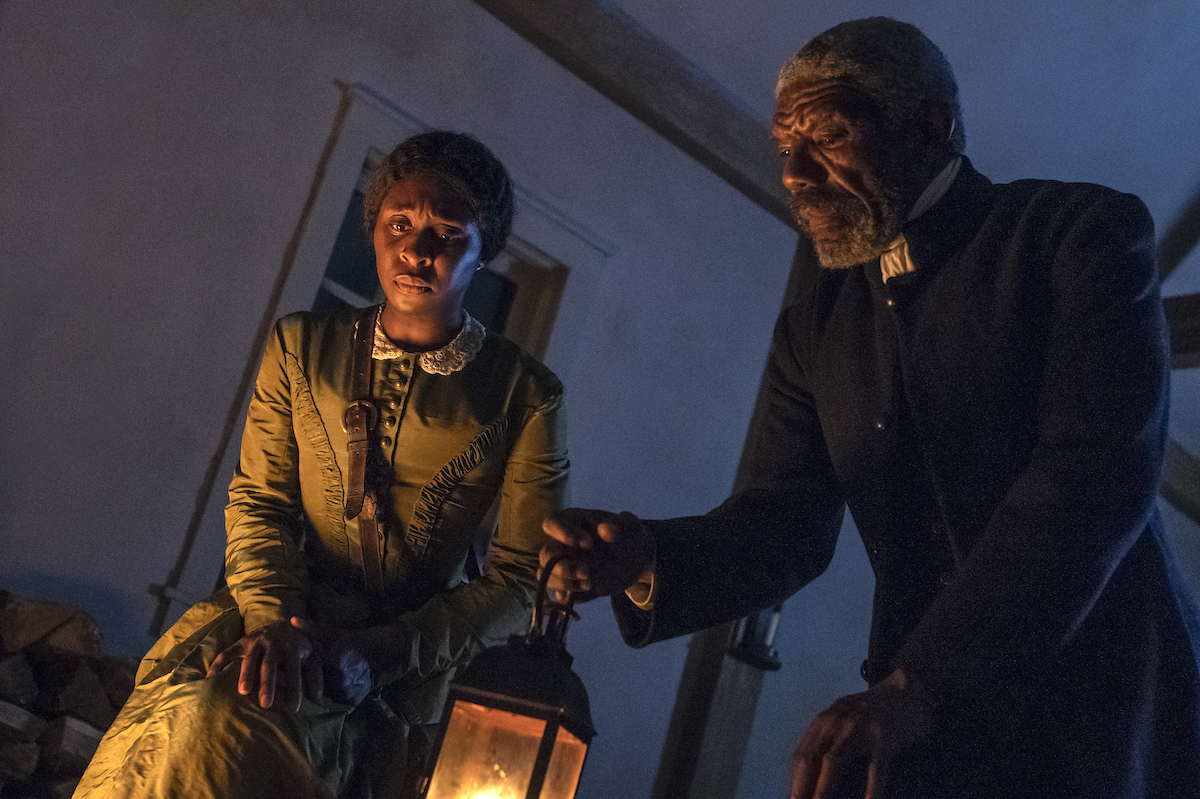
Production Designer Warren Alan Young, who says he was brought to tears during the making of Harriet (Young’s ancestry includes family members who were slaves), was equally challenged to deliver the best possible look, despite the limitations imposed by shooting inside historic locations. Young, who designed Lemmons’ 2007 feature, Talk To Me, has plenty of experience with period films. He smiles when he says that during the making of Harriet, he was often reminding “anyone who would listen” there are no light bulbs or light switches on this project.
“There were light fixtures at that time that would have been gas or oil operated, and then later be converted to electricity,” Young details. “And the majority of the locations we were shooting in – the slave quarters, the cabins, the different homes – would have had these kinds of practical light sources. Of course, the period locations also meant there was wood and flammable materials everywhere, and the cost of making everything flame retardant was prohibitive. We did work with some period oil lanterns and gas flames in select scenes, but they had to be handled very carefully by props and set dressers to maintain all safety protocols.”
Shooting inside historic locations – like when Tubman joins a group of the nation’s most prominent abolitionists at the Auburn, NY home of Senator William Seward – imposed a host of challenges for the Art Department. “That scene at Seward’s house was shot in the Berkeley Mansion, in Virginia, which was built in 1726,” Young shares. “So anyone moving equipment across those floors – grips, electricians, set dressers, the camera team – had to take extreme care. The same applied to the furniture, most of which was of that era. Normally, we would move every piece of furniture out that we weren’t going to use, but in this case, we carefully wrapped everything and stored it in an area of the house that was off-limits.”
Young was allowed to paint some of the interiors of the Berkeley Mansion to a specific color, “and then have a professional crew come back and restore the colors that the museum already had in place,” he notes. “You have to make compromises shooting in historic locations – the floors were so old in the Berkeley Mansion they would often make too much noise when the actors walked, so rugs had to be brought in. There was another location – the Saw Mill, where Harriet’s husband and father worked – that was also built in the 1700s. It was actually in great shape, and our goal was to leave it that way.”
The Berkeley Plantation, one of the first-ever built in the American colonies and the former home of two U.S. Presidents, is on the National Register of Historic Places. It also supplied the location for the Brodess home and farm, from which Harriet escapes and returns many times to rescue her family and friends. Built in the 1800s, the house required custom window treatments and draperies, as well as custom-built or bought upholstery.
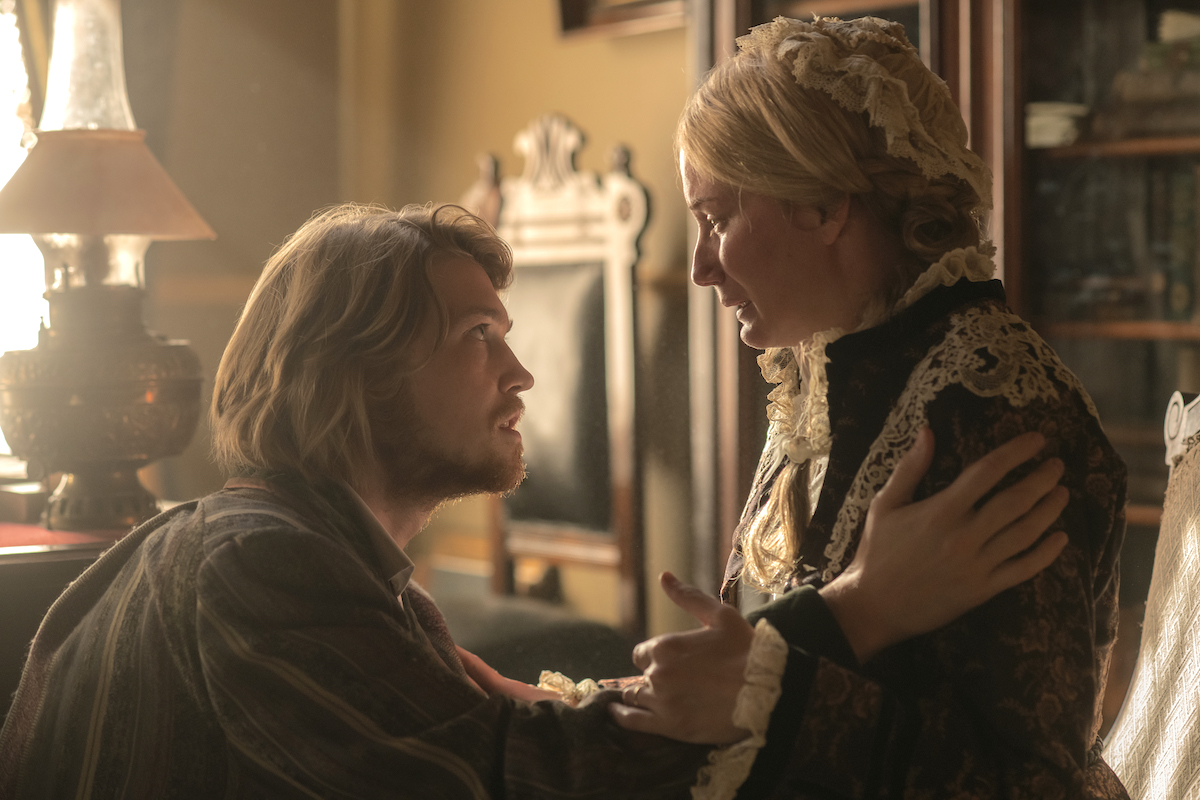
When Harriet arrives in Philadelphia, Young says, he, Lemmons, Toll, along with Costume Designer Paul Tazewell, wanted to visualize a distinct contrast from the world Tubman has just escaped. “Aside from people of African descent walking about freely [in Philadelphia], people of other ethnicities were not offended by Harriet’s presence,” Young explains. “The boarding house is run by Marie Buchanon [Janelle Monáe], a woman of color who has her own business – that’s an astonishing concept for Harriet. In this location, Marie had created an environment that was warm and inviting [for escaped slaves coming up from the South]. So that scene where Marie bathes Harriet is literally a washing away of her past to emerge a new and free person.”
That key moment Young describes occurs after Harriet’s initial escape north from the Brodess plantation. William Still (Leslie Odom Jr.), a devoted abolitionist who later introduces Harriet to key figures in the free slavery cause, refers her to the Buchanon house.
Lemmons says the bathing scene, like the rest of the film, was an ambitious one, “given that we were over-scheduled, and John and I felt going in it would be a small miracle if we got everything we wanted in the time we had.” The framing and composition in the scene makes use of a mirror, with Harriet never looking directly at Marie, as the free black business owner gently scrubs off weeks of dirt from the former slave’s back. “It’s an intimate moment, and not many [crew members] could even fit in the space we were shooting in,” Lemmons laughs. “I’m mostly very thoughtful about the frame and like to look through the lens. But even having shot listed the entire movie, John would often pull me over a few feet and say, ‘what do you think about shooting it from over here?’ Of course, it was usually more beautiful than what I had imagined.”
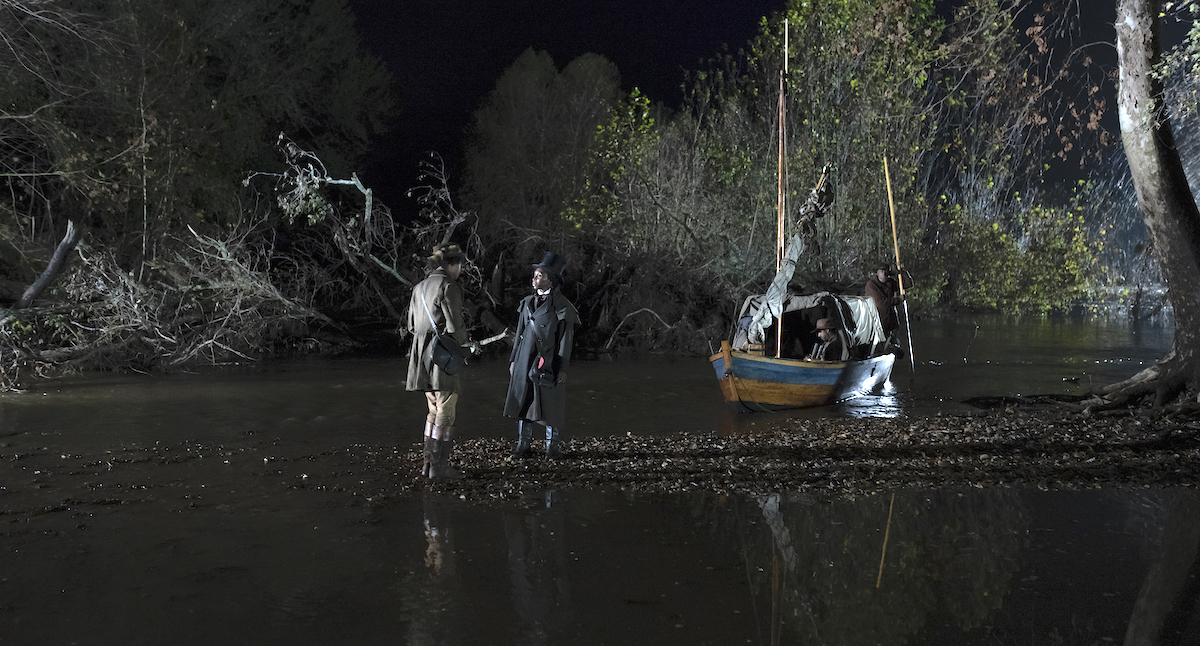
Creating beautiful illumination was also made more challenging by Toll having to find balanced exposures for the multiple types of skin tones within scenes. Toll notes that, “when we shot film we trained ourselves to see as a film stock would see, but every cinematographer I knew admitted to having sleepless nights waiting for dailies. Especially when they were doing their best work and taking chances. There are advantages now, shooting with digital cameras and working with a talented DIT doing on set color correction. Indy [Maninder] Saini was our DIT on Harriet, and she did a fabulous job. She’s fast and mobile and could put her cart wherever I needed it. With all of the night exteriors this was a big advantage. And during final color correction, we finished in a very short period of time. Seven days. I attribute this to Indy’s work on the set while we were shooting, as well as the work of our very talented DI colorist, Tony Dustin.”
Toll says having an experienced DIT on an indie feature paid off throughout, given the many scenes that required remote iris changes. “I haven’t worked this small and lean in quite a while,” Toll reflects, “and it was exhilarating to see these kinds of happy accidents – scenes where there was zero rehearsal or planning come out so well.”
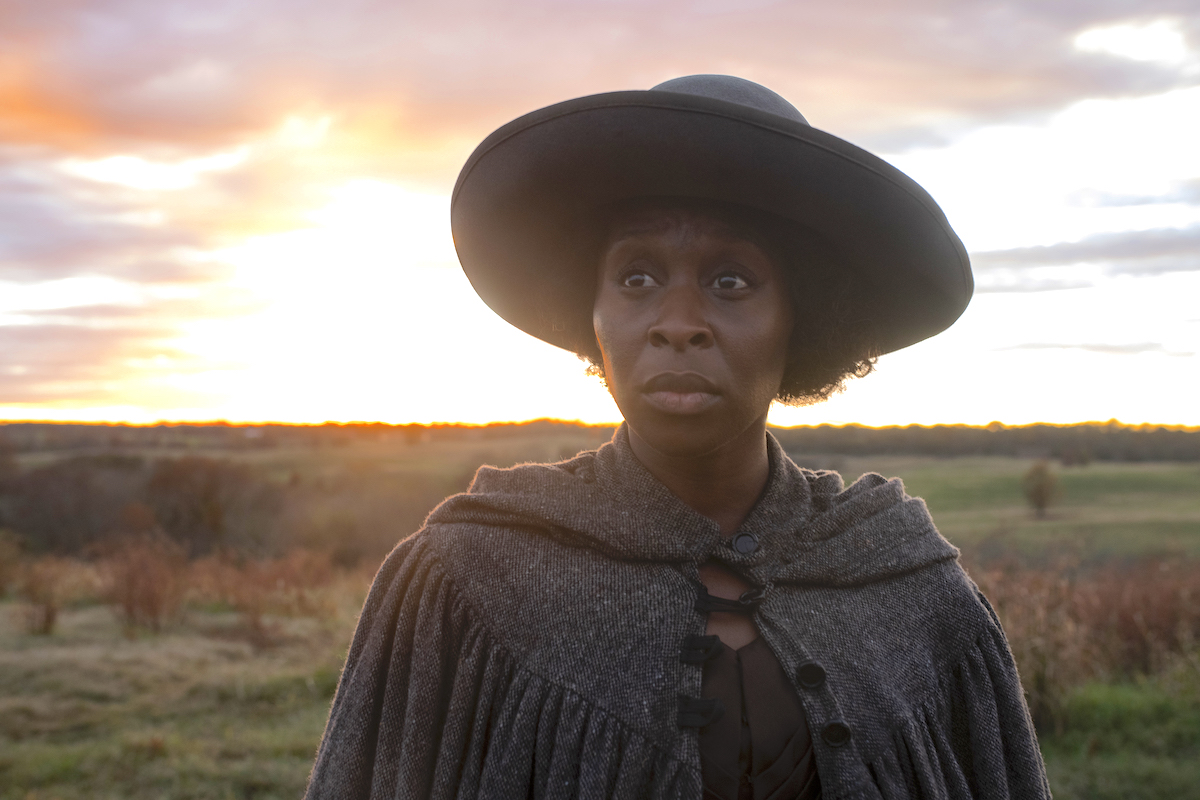
One such example is when Harriet is given a ride to the state border by a white abolitionist farmer, who has allowed her to take refuge in his house. Set at sunrise, Harriet comes out of the carriage and stares at the rolling land ahead, and her first real taste of freedom.
“That scene was set to be shot at sunset,” Toll recalls, “but our tight schedule didn’t allow any flexibility for which day it would be. The actual shoot day was gloomy and overcast as we shot two other scenes earlier. But, as we we arrived at the last location just prior to sunset, the sun came bursting out and the light was perfect. So, it became a mad scramble.”
Toll adds that as they arrived at the location, the clouds parted, and A-camera/Steadicam operator, Daniele Massaccesi, and 1st AC/Camera Tech Chris Toll quickly busted out the Steadicam and lined up the portion of the scene where Harriet exits the carriage and walks down the hill (into the sunrise) and freedom.
“There was literally no time to rehearse,” Toll recounts. “I don’t think Kasi had more than 60 seconds to speak with the actors before we started to shoot. The scene starts in a raking two-shot with Harriet and her guide leaving the carriage, and there is a sense they are standing in late afternoon light. Cynthia starts walking toward freedom, and it was completely unrehearsed or even discussed, with Daniele following behind her shooting toward a setting sun just about to hit the horizon. All this was happening as most of the crew were just arriving at the location. It was incredible. We could have spent hours planning and blocking the scene and it would not have had the same magical look and feel that we got just being spontaneous.”
Lemmons says the scene was inspired by Tubman’s description of crossing over into freedom, “when she says, ‘I looked at my hands to see if I was still the same person – if I [physically] looked different [as a free person],’” the director relates. “That’s how profound that moment was for Harriet – stepping into freedom. And that’s what I wanted to capture.”
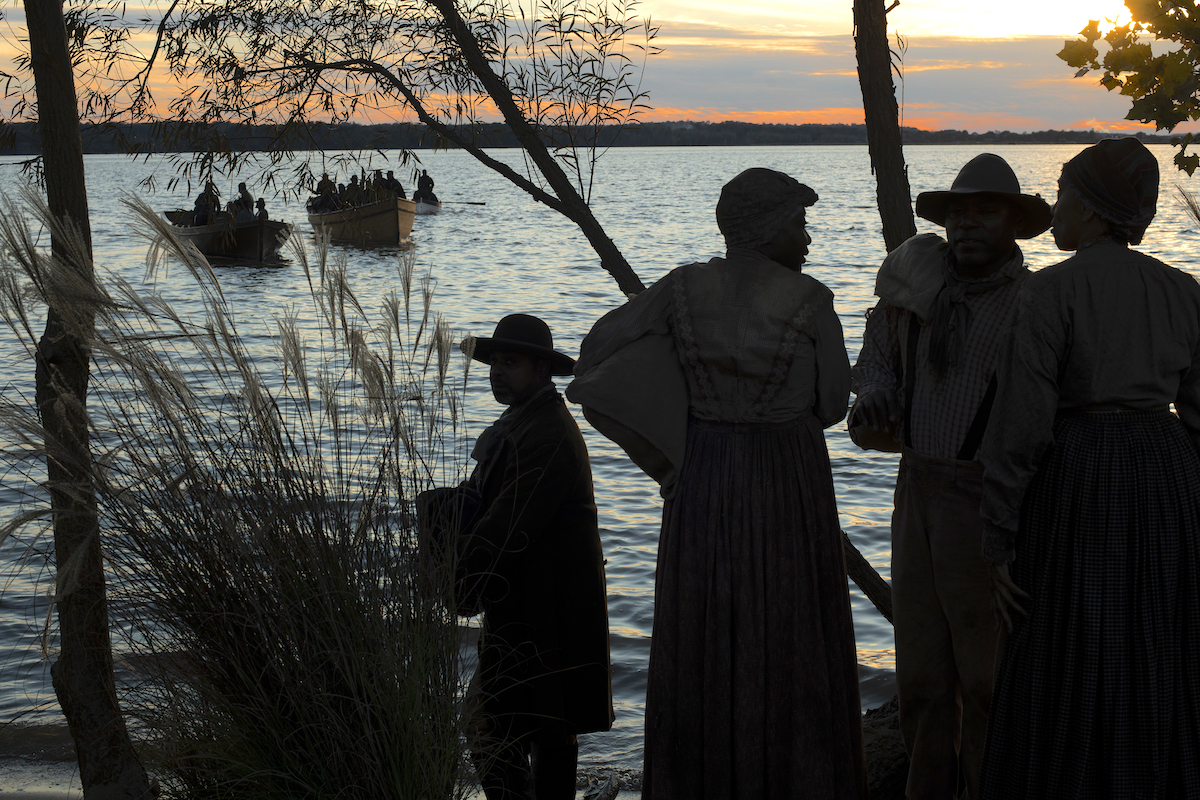
Profound moments (or more likely divine intervention) seem to follow Tubman throughout her many dangerous journeys. Today, her frequent blackout spells would be controlled by anti-seizure medications. But in the 1800s, there was no such remedy, and Tubman, a religious believer, often recounts the episodes as God speaking to her.
“There was an evolution of the visual language we ultimately used to express Harriet’s visions,” Lemmons shares. “I read quite a bit about what people experience when they go through seizures, and it was often described in this monochromatic way – piercing, very much on edge and disjointed. Harriet had dreams, visions, religious experiences when she went through these quite frequent seizures. We wanted them to feel shocking on-screen.”
B-camera operator Kim Marks led a splinter unit that captured the abstract imagery. Marks, who recently wrapped another B-camera assignment in Virginia (for Peter Demming, ASC), says he, Toll and Saini discussed looks that could be achieved in the field and enhanced in post.
“We talked about some obvious choices of exposure/shutter angle/frame rate in different combinations,” Marks recalls. “Lenses were also discussed but the challenges of carrying extra ‘specialty’ lenses became difficult because of the budget.”
The final decision for the visions, according to Marks, was to combine “radical camera angles” with specific camera settings, along with some post manipulation.
“Virginia has beautiful land and waterscapes, which gave me many opportunities to use John’s collection of vintage long lenses that [Panavision’s] Dan Sasaki has cared for over the years,” Marks adds. “I had his 200mm Canon, 300mm Nikor, and a 150-600mm Canon zoom, which all helped to create the abstractions. Besides the in-camera work, I also shot elements that I knew could be composited later to give editorial the pieces they needed. I think these also helped stitch together some of the film’s transitions.”
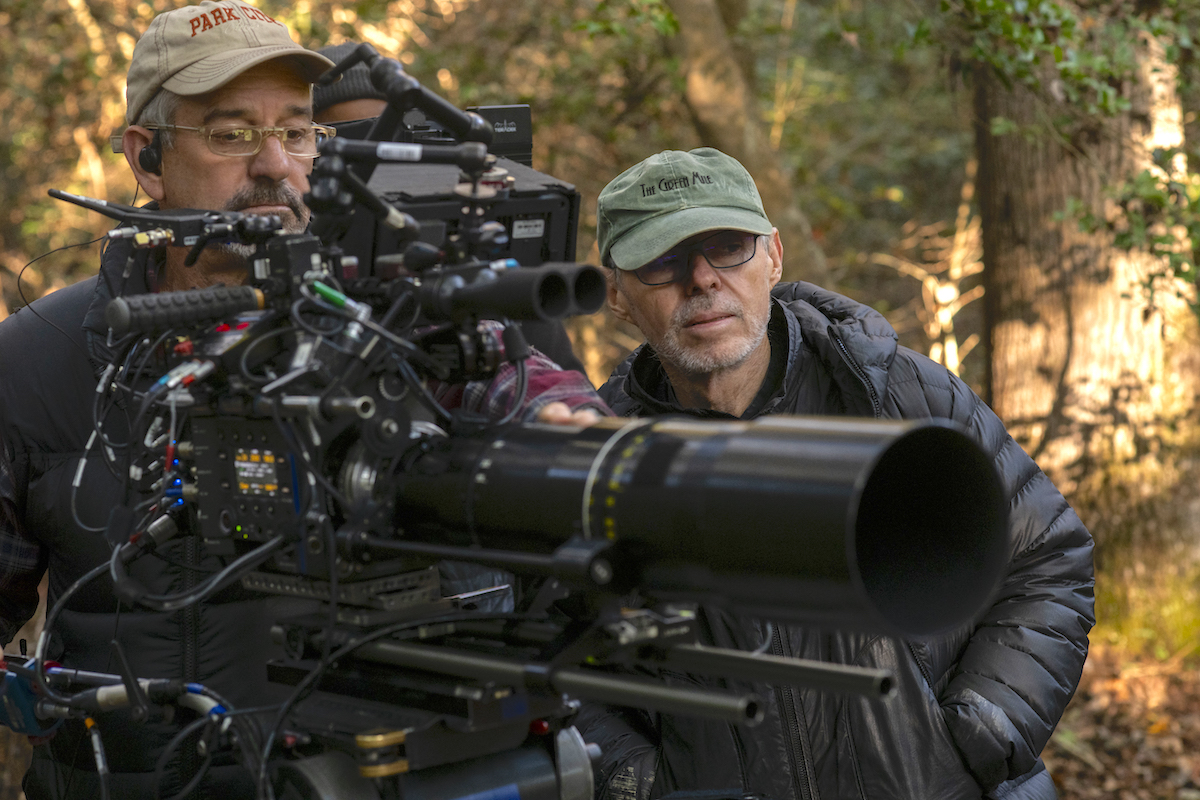
Both A and B cameras were Sony VENICE, making use of the camera’s dual native ISO’s – 500/2500. “John and Indy settled on some LUTs when I was in range of the tent, and Indy would guide me through exposure options,” Marks continues. “When I was out of range of the tent [B-camera 1st AC] Dwight Campbell would bring up the histogram to help us set exposures. I would also try and set my onboard to a look that worked and always referring back to RAW to see if we were pushing it. Nothing was ever baked-in, to give John total control in post. I shot almost all my footage as day exterior and available light scenes. One night scene was accomplished using torchlight at night. The VENICE is amazing even at elevated ISO settings.”
Using Sony’s popular new camera was a big draw for Toll, who says the high ISO’s the VENICE’s sensor can tolerate were a perfect fit for a “period film, where virtually none of the practical light sources were electrified,” he notes. “The farmhouse where Harriet lived was built in the mid-19th Century and had little natural illumination – even in the middle of the day with bright sunlight, the size and placement of windows they used back in that time did not provide much interior light. The practicals we used were mostly enhancements, as any meaningful light had to come in from outside. So the VENICE was quite remarkable in seeing whatever small amount of non-electrified interior source light we did have.”
Toll praises Lemmons’ ability to gather a high-level creative team willing and eager to tackle a sprawling period film on an indie budget. “I was probably one of the few [department heads] Kasi had not worked with before,” Toll explains, “and I was so impressed by how respectful everyone was of each department’s unique issues. Right down to props and set dressing for the period aspects, this was a group of very experienced and motivated filmmakers.”
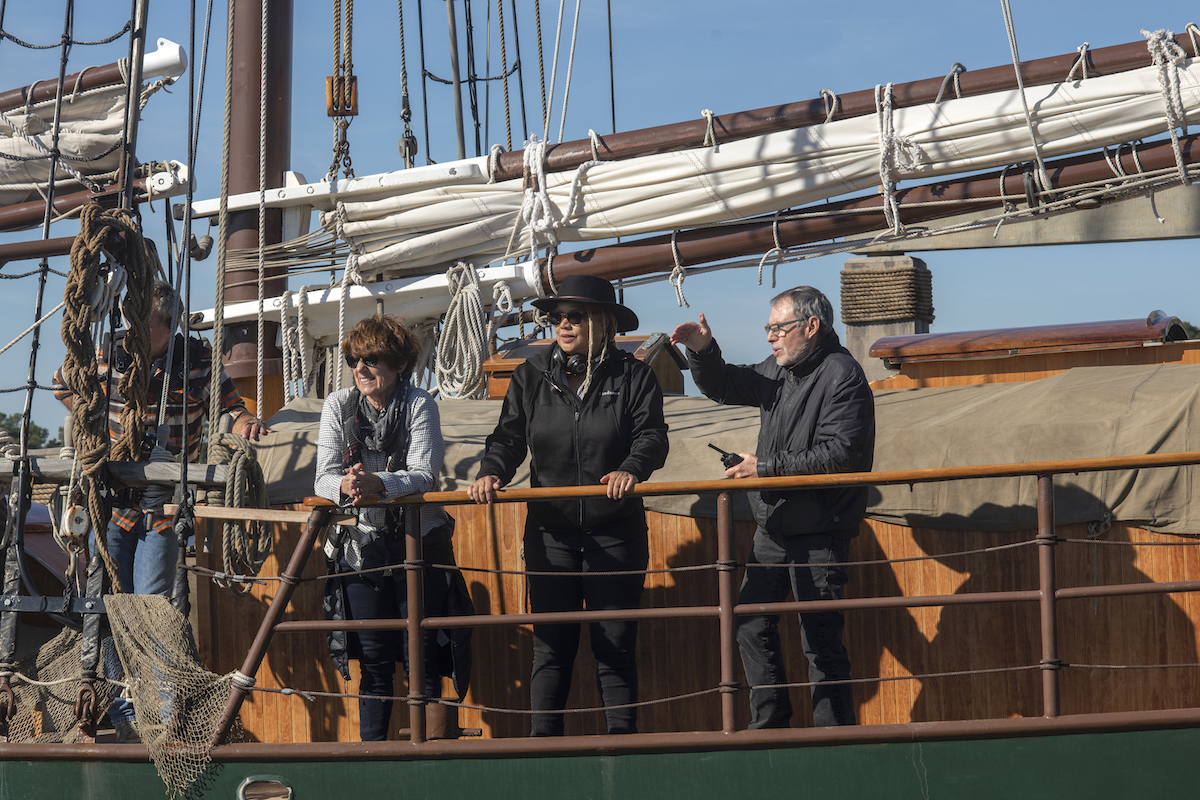
Young and Marks return the compliment, describing working with Toll as high points of their respective careers. Marks references a scene during Tubman’s initial escape, where she is on the river in a (real) rainstorm. “Dwight [Campbell] and I backed up about 50 yards from the scene and put on the 200 mm shooting a profile of Harriet and the Boatman silhouetted against the river,” Marks recalls. “Once John saw the shot he gave me the space to shoot it – it was a stand-alone that could work for the beginning or the end of the scene. That’s impossible for [B-camera] to accomplish without someone like John having trust in all his crews. Grip, electric and camera are creative tools John uses, and he expects creative solutions to issues and opportunities that arise. He’s a master of his craft and it has been a gift to work with him over the years.”
Young, who was working with Toll for the first time, describes the working partnership between Production Designer and Director of Photography as one of the closest on the set. “For the last five years, on all of my projects, I’ve been designing sets that can accommodate as much built-in practical lighting as possible, and the DP’s are all very much on-board with this approach. I think that’s for multiple reasons: one, we are often striving for as natural a look as possible, and two, the restrictions we’re often facing these days encourage that workflow.”
The designer says that certainly was the case with Harriet, where he adds, “I learned a lot watching John Toll work! He knows so much about every aspect of filmmaking and was continually coming up with new solutions to different problems. I often told everyone, ‘you know John is also doubling as one of my art directors, right?”
At the end of the day, Lemmons concludes, “everybody was making this movie for Harriet. It certainly wasn’t for the money or glamor – late nights in the woods and mud,” she laughs. “This was an opportunity to sing this song about an unsung hero, in cinema, and to make it a big, emotional experience for the audience. It felt like everyone involved in the project had that same mission.”
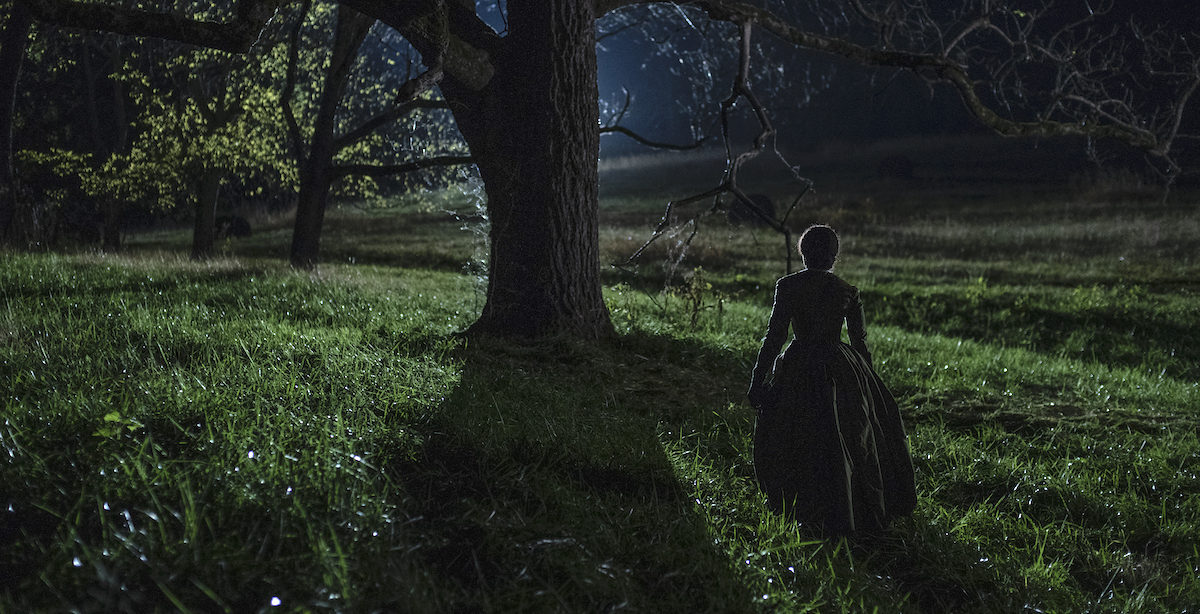
Local 600 Crew – Harriet
Director of Photography: John Toll, ASC
A-camera Operator: Daniele Massaccesi (non-member based in Italy)
A-camera 1st AC : Chris Toll
A-camera 2nd AC: Terry Wolcott
B-camera Operator: Kim Marks
B-camera 1st AC: Dwight Campbell
B-camera 2nd AC: Eric Eaton
Loader: Rinny Wilson
Unit Still Photographer: Glen Wilson, SMPSP
